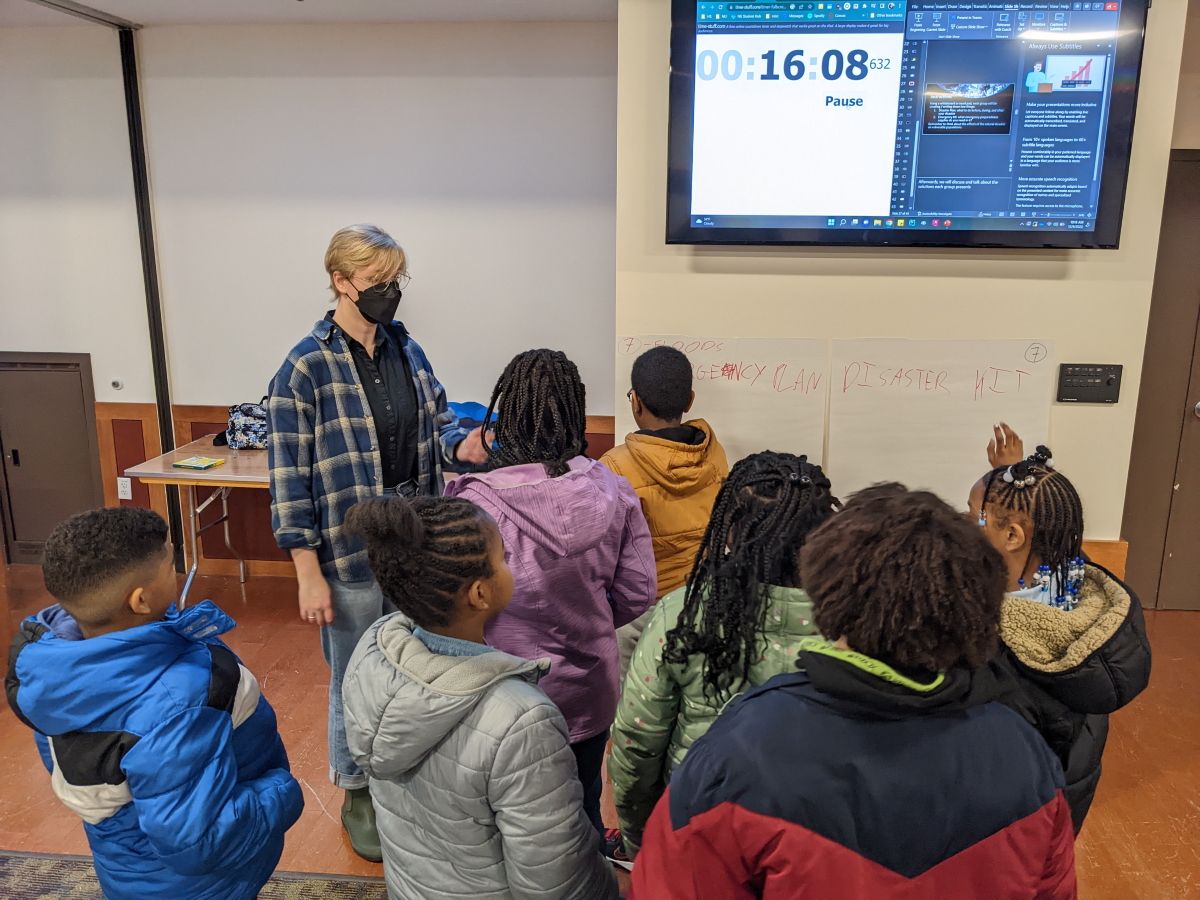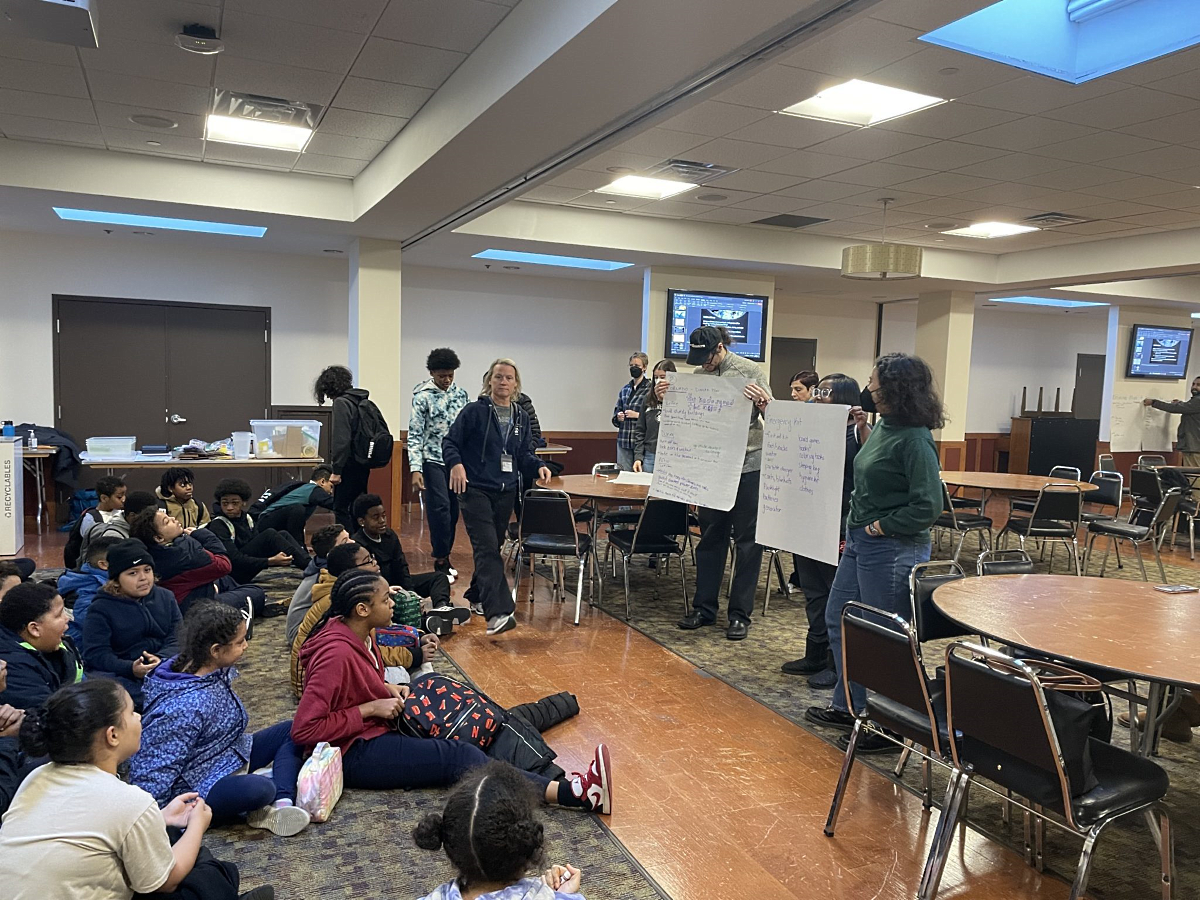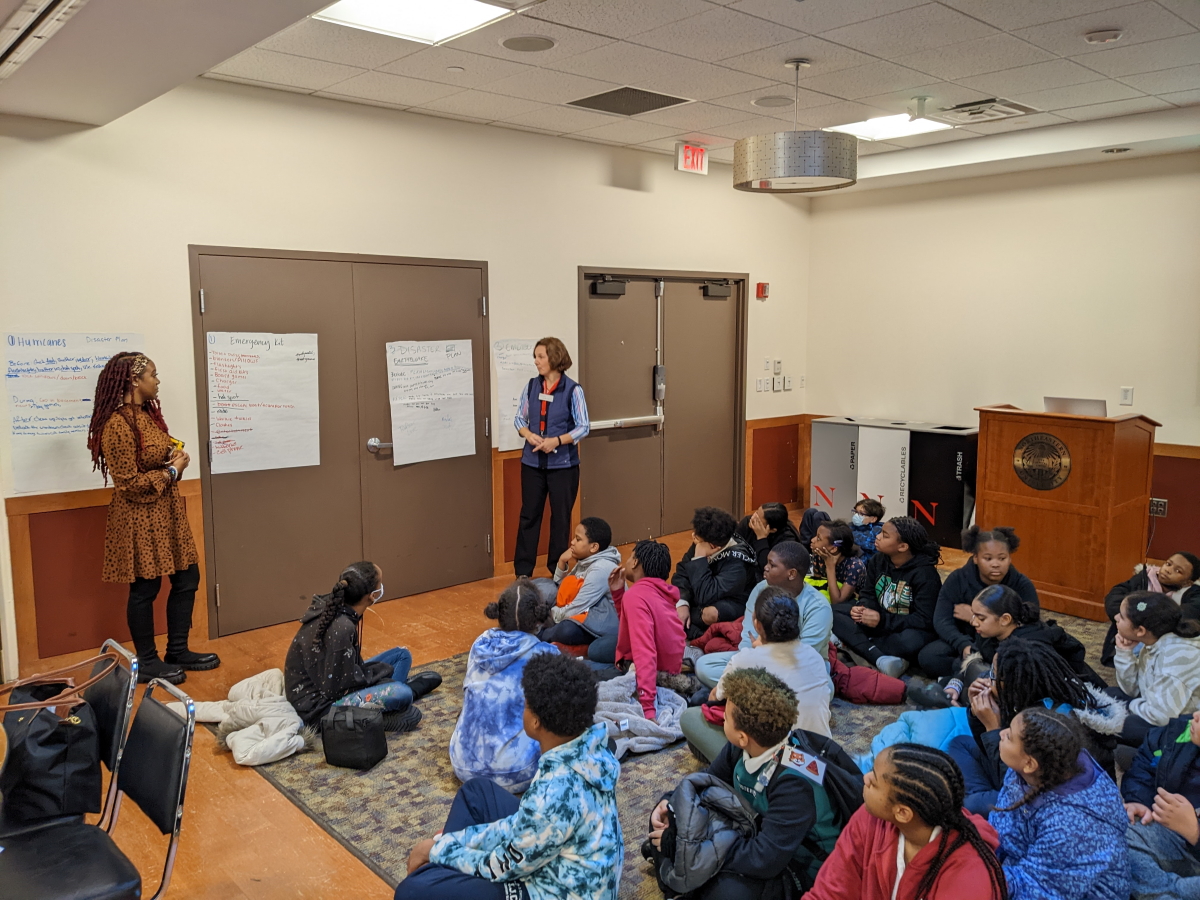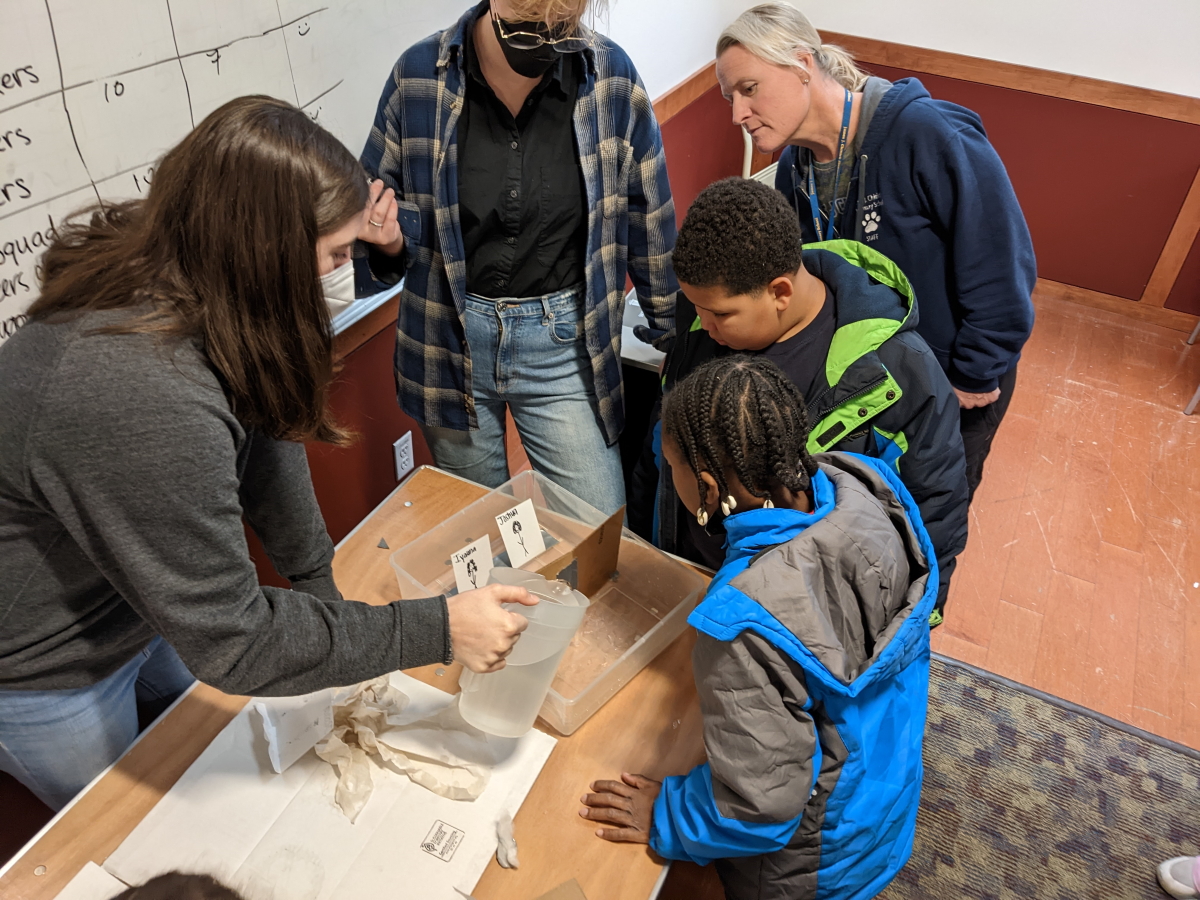Last Friday, 12/9/2022, we had our penultimate field trip of the semester, wherein the 4th, 5th, and 6th grade classes from the Chittick Elementary School came to learn about natural disasters and preparedness. Thank you to NEU volunteers for making this day possible: Maya, Erika, Munin, and Courtney
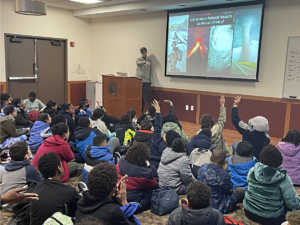
Nick asks students to list examples of Natural Hazards, such as hurricanes, invasive species, or solar flares
The day focused on learning about natural disasters and natural hazards, looking at how they form and how we can prepare for them and mitigate the consequences. We briefly touched on Boston’s natural disaster plan – which is now over 300 pages. It’s actually being updated right now, so if you want to add your input, you can do so. We looked at vulnerable populations in Boston and how they might get impacted by rising sea levels and annual floods (you can explore this tool here). For our first activity, we split into six groups and assigned each group one natural disaster: earthquake, blizzard, flood, heatwave, pandemic, or hurricane. Then, students were given 30 minutes to come up with a “Disaster Plan” – what to do before, during, and after their disaster as well as to come up with a list of emergency supplies they want prior to the disaster. After each group shared, we discussed commonalities and what an emergency kit ready for any disaster might have.
Next we envisioned a situation in which we were stuck at home with an approaching hurricane – a common occurrence in the south when residents don’t evacuate for whatever reason (fear, age, missing the news, etc). Stuck at home but warned of immense storm surge, we need to create (improvise) a personal flotation device. Students were given a wide range of materials to choose from (to simulate lightweight supplies found around the house) and had to create a flotation device to keep a can floating in a basin of water. Most of the devices kept the cans floating in the water, but many of them rolled to the side: note to future me: draw faces onto the cans (so we know if the “person” is floating face-up or face-down).
For our last activity, we looked at an existing design that Boston has for East Boston – the Greenway Flood Wall. This seven-foot high flood wall is temporary and deployable, i.e. it is only used when a flood is anticipated and on normal days is kept in storage. Taking inspiration from this design, students designed their own deployable levees,creating designs for levees that can be placed and removed after the flood: using a plastic tub and various materials such as cardboard, plastic, sand, etc. The trickiest part of the activity is figuring out how to make the sand easy to add and remove – just dumping sand down isn’t very “deployable”, as you’d need some way to pick up all the sand particles afterwards (putting the sand in a plastic container is the best solution to this). In addition, the plastic bin, like roads in Boston (potholes), has little grooves that water can sneak through. This time around, groups did not properly address these cracks and most designs flooded quickly (7 seconds). If we had more time – groups would have continued with the engineering design process and improved their designs, figuring out ways to cover these gaps. The winning group lasted 14 seconds – addressing this problem by using sand in plastic bags to cover the gaps.
- NEU student Munin works with her group to work out how to prepare for flooding
- Erika shares her group’s disaster plan and emergency kits – what to do before/during/after a disaster
- Courtney and Professor Love share about their disaster plans/kits
- Maya tests a portable levee -> timing how long water takes to pass the barrier and “drown” the people

